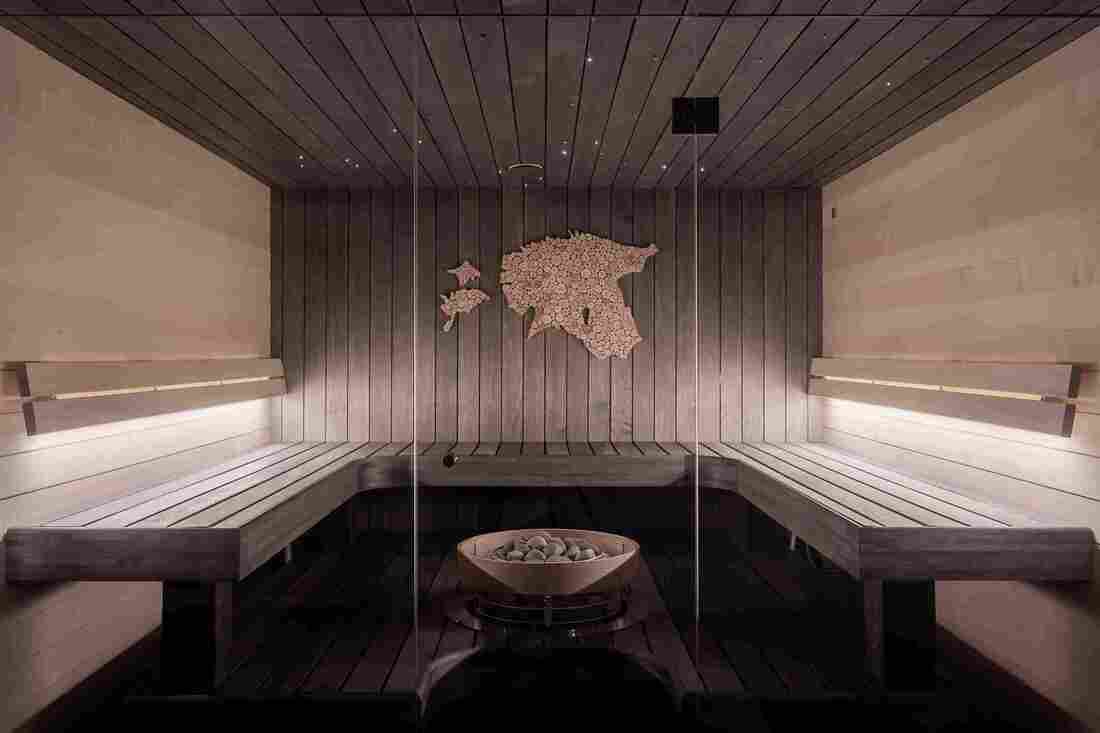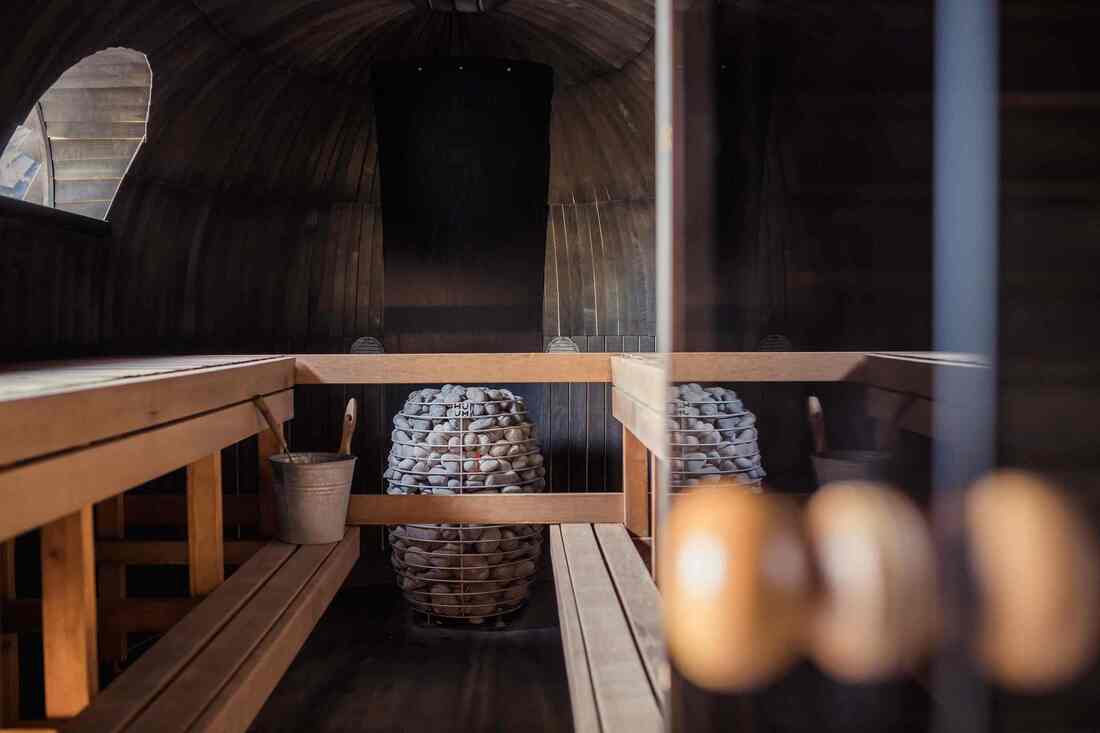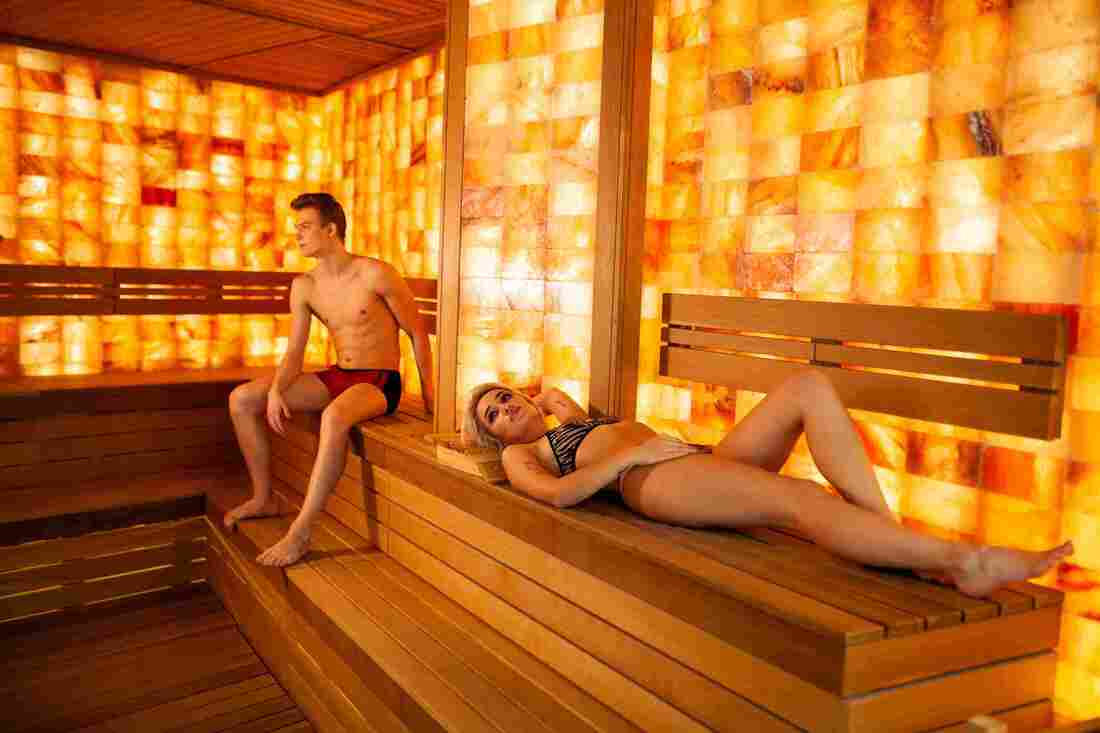|
Thinking of building a sauna? You might want to consider your choice of wood. Of all the variables that should be considered before building a sauna, the choice of wood is most important. But how should you go about it? What type of wood is suitable for building saunas? And what are the qualities you should look out for in the wood for building a sauna? In this blog, we will answer these questions and guide you into buying suitable wood for your sauna solution. But first, let’s understand the type of sauna you are looking to build. The Type of Sauna (Traditional vs Infrared) Traditional saunas and infrared saunas employ different heating methods. Therefore the choice of wood should also be different. Traditional saunas use steam to heat the cabin and help us sweat. A traditional sauna has a bucket of rocks that are heated using wood, fire, or an electric heater. When these rocks are heated, the temperature rises. A traditional sauna also has a bucket of water and a ladle to sprinkle the water over the rocks. This helps produce steam and cool down the rocks for a while, thus maintaining an ideal temperature. Note: traditional saunas and steam rooms are entirely different from each other, although there’s steam in a traditional sauna. An infrared sauna, on the other hand, mimics the sun. They use infrared lights to heat up your body directly instead of heating the air around you. We are mentioning this because the heating method determines the choice of wood for the sauna. You see, unlike making a steam shower, you do need the top-notch wood for building a sauna. However, the wood choice in regular saunas vs infrared saunas will differ. For traditional saunas, you want the type of wood that can withstand heat and moisture. For traditional saunas, you want the type of wood that enhances your heat sessions and can manage the high temperature. You might also want to read - 8 Best Sauna Heaters In 2024 Now that we have understood the requirements for traditional and infrared saunas let’s take a look at the qualities you should look out for in your choice of wood. What Qualities You Should Look for in Wood for Sauna There are several types of wood available in the market, each with its unique characteristics and strengths. Let’s look at the most desirable characteristics you need in the wood for sauna. Mold Resistance While traditional saunas offer dry heat, they can still reach a humidity level of up to 45%. So, you need to choose a wood that can withstand humidity without giving in to molds or any other issue associated with regular humidity. For infrared saunas, humidity and mold resistance wood are not that essential as they heat up the body directly. Water Resistance As we mentioned earlier, traditional saunas have water to be poured on rocks for steam generation. Water may often splash across the wall or spill on the floor. Moreover, you will also be sweating in a sauna, and you don’t want the wood to absorb all the moisture. Make sure to choose a water-resistant wood for your traditional sauna. Heat Resistance This goes without saying that the wood you choose needs to be heat resistant. The temperature in traditional saunas can reach up to 200 degrees Fahrenheit. Choose a wood that can withstand a high amount of heat over prolonged periods of time without discoloring or degrading in quality. Infrared saunas One of the benefits of infrared saunas is that they don’t heat up to such high temperatures. But it’s always better to use heat-resistant wood for assured safety. Looking for such infrared sauna wood? Our list of cedar for sauna also has the best wood for infrared sauna. Durability A sauna room constantly goes through the heating and cooling phases. Therefore you must choose the wood that doesn’t warp, expand, shrink, or crack. For infrared saunas, this is even more important. Since infrared sauna uses drier heat, it sucks the moisture out of the wood, leaving it vulnerable to cracks. This is why infrared saunas are mostly made of kiln-dried wood. Antimicrobial and Antifungal Properties The Although the warm and humid environment of sauna rooms are apt for reaping heat-shock protein benefits, it can encourage the growth of microbes and fungus. Go with wood with antimicrobial and antifungal properties. Cool to Touch Another essential factor to consider is that the wood for sauna doesn’t absorb too much heat and gets hot to touch. This is important because choosing the right wood will keep you safe and comfortable during your sauna session. Softwood is more suitable for sauna rooms because it doesn’t absorb too much heat and will remain cool to the touch. Lack of Knots and Saps Lastly, take a look at your choice of wood for saps and knots. While knotty wood can be used in paneling the parts that you don’t interact with, it can still take away the aesthetics of your sauna. Knots should especially be avoided for benches as they can cause skin rash issues. Moreover, make sure your choice of wood does not have any sap in it can melt in the heat and weaken the structure of the sauna. Now that we have looked into the specifications of the wood for a sauna let’s take a look at the best ones that possess these qualities. The Best Woods for Sauna Rooms Western Red Cedar One of the most preferred choices for saunas, western red cedar is softwood and thus less likely to crack or expand under high temperatures. Cedar is also colorful in appearance with various hues, which can be a plus for the aesthetics of your sauna. Cedar’s insulation properties allow for the heat to flow evenly through the sauna while keeping the surface cool to the touch. Most importantly, cedar is fungus and decay resistant and can last a long time. And this is exactly why it always tops the list of best wood for sauna baths. Redwood Redwood is quite similar to the western red cedar, except for a few factors. It is softwood and can withstand high temperatures. It is beautiful red in color, giving your sauna a distinct look. Redwood is also resistant to molding, fungus, and decay. However, there are also a few drawbacks with redwood that needs to be mentioned. Firstly, redwood fades in color over time. After a few months of use, the red hues will deteriorate and turn greyish. Newly installed redwood saunas also secrete red color, which can mix with your sweat and turn your body red. Western Hemlock Western hemlock does not have as many favorable characteristics as western red cedar, but its durability and distinct pattern make it a good choice for sauna. This type of wood is best paired with other woods for a complete sauna solution. You can use the western red cedar for the interior and exterior construction of your sauna and the western hemlock for the benches and doors. Keep in mind that western hemlock tends to expand a bit and is not as decay resistant as other options on the list. Nordic Spruce Nordic spruce is also known as Norway spruce or European spruce. It is found in Northern, Eastern, and Central Europe. It is one of the preferred choices for a sauna because of its density and firmly ingrown structure. Nordic spruce is the most used wood for building saunas in Finland. It is a light-colored wood that remains pale throughout its lifespan. It also exudes a subtle aroma and contains natural insect repellent properties. Nordic spruce contains a bit of sap that will vary from board to board. So, make sure you check the wood for the same. Common Aspen Aspen is another distinct wood that is often used for building saunas. It is bright in color and is found in cooler regions of Europe, Asia, and Northern Russia. Aspen is naturally non-toxic, non-allergenic, resin-free, and moisture-resistant, making it an optimum choice for saunas. Aspen is also resistant to fungus and bacteria, making it a safe choice of wood. Common aspen can give your sauna a luxurious look, thanks to its unique light tone and patterns. Alaskan Yellow Cedar Alaskan yellow cedar is a prime choice for hot tubs, saunas, and pools. Since it grows in humid environments, Alaskan yellow cedar can withstand the hot and moist sauna rooms. It is lightweight but dense enough to allow for intricate construction. Alaskan yellow cedar is not actually a cedar but rather a type of Cypress that was once used by Native Americans to build totem poles. It is highly resistant to fungus and molds and is often chosen for its unique yellowish tint that gives the sauna a rich look. Alaskan yellow cedar also exudes a subtle smell that can add to the sauna’s therapeutic effects. Not to mention, Alaskan yellow cedar perfectly complements LED lighting for sauna rooms, thus helping create warm ambient lighting. Douglas Fir Douglas fir is not a true fir. It belongs to the pine family. Found in Western North America, the douglas fir yields more timber than any other tree in the region. Douglas fir is used as a Christmas tree, thanks to its ornamental appearance. It is highly valued for its durability, strength, and appearance. Douglas fir offers a beautiful uniform appearance to your sauna. It has antifungal and decay-resistant properties and exudes little to no scent. Pine Pine is the most affordable wood for building saunas. Most pine trees yield darker color wood similar to spruce, except they tend to have more knots. These knots may dry and fall out, especially in infrared saunas. So, they aren’t a preferred option for infrared saunas. If you are planning on using pine for building a sauna, use it for the parts that you won’t interact with. However, if pine is thermally treated, it becomes an entirely different type of wood: stronger, denser, and more stable. So, make sure the pinewood you use in your sauna is kiln-dried or thermally treated. Eucalyptus Eucalyptus is an aromatic softwood. It is a fast-growing tree, which makes it a sustainable choice of wood. It has a beautiful, unique look that can give your sauna a distinct personality. Eucalyptus is quite rare and is more expensive than other options on the list. This is the reason why it is not often used in building saunas. It is the only wood, besides cedar, that boasts natural insect and rot resistance. Eucalyptus also comes in a range of colors and grains, and it changes color as it fades. Basswood If you have sensitive skin, basswood is the premium choice for you. It is light brown in color and contains natural antifungal properties. It is also softwood, which means it will last a long time and perform well under high temperatures. Basswood does not contain any smell or toxins and has little to no knots. It is soft to touch and resistant to expanding and cracking. The best thing about basswood is that it is affordable and accessible and the most recommended wood for infrared saunas. Fun fact:Did you know, some of the sauna wood on this list are so resilient to moisture that you can use them to make the best steam shower? You may also want to read about the benefits of building a steam shower in your home. Reasons to go for wood in your sauna Having seen the various types of wood that go into a sauna, you might wonder why exactly you need to invest in good quality wood. So here are some reasons why wood is critical for your sauna: #1. Wood creates an unmatched aesthetic appeal You’ll agree when we say that a steam sauna is as much about luxury and aesthetics as it is for heat and its therapeutic benefits. And to that end, it is important you create a sauna which, apart from having the optimum heating capability, also has a charming decor. Talking about sauna room aesthetics, there’s no material that can make your sauna as elegant as wood. In fact, you can make the sauna wood resemble just about any design. Also, no matter the kind of decor your steam sauna bath, wood can blend perfectly into any style. As such, from the looks of a traditional Finnish sauna to a high-end personal spa to one creating a forest vibe, there are endless patterns that wood can create. #2. Wood has incredible tolerance to heat Unlike your shower, a sauna is such a space where you need to sit for at least 30 minutes, which is the normal duration of a sauna session. Add to it the fact that a sauna enclosure can get way hotter than a shower, with temperatures ranging between 150 degrees Fahrenheit and 195 degrees Fahrenheit. Meaning, when it comes to building a sauna, you’ll need a material that will not break in such intense heat conditions. And that brings us to wood, the only ideal heat-resistant material for a full-proof sauna. First, wood does not become very warm despite the high temperature in the sauna. So even if you’re sitting on the sauna bench with little clothing or leaning against the sauna wall, your skin is least likely to suffer a burn. Second, depending on its type, it is possible for the sauna wood to change color and get dark over time. However, contrary to materials like glass, porcelain, or tile that develop cracks or break in hot conditions, you can rest assured of durability with the wood. That’s because not only can wood easily withstand the heat but it also lasts you for years. #3. Wood is apt even for a wet sauna Even though there are many sauna types, based on the heating conditions they create, you can categorize them as dry and wet saunas. In a dry sauna, heat is produced by warming up volcanic rocks. And as a result, the humidity and moisture conditions are minimal in such saunas. Nevertheless, that’s not the case with a traditional wet sauna wherein heat is produced by pouring hot water on sauna stones. So a highly moist and humid sauna enclosure is commonplace in such saunas. Thankfully, apart from the capability to stand extreme heat, some wood types can also resist moisture in a wet sauna with zero effect on their quality and longevity. #4. Natural aromatherapy with wood If you’re someone who visits a sauna regularly, you know that the right aroma in a sauna bath is as important as sauna heat. You see, while the heat in a sauna nourishes your body, a balanced and soothing aroma works wonders to rejuvenate your mind. And that’s exactly why aromasense pumps are highly sought after in saunas as well as steam showers. But what if we told you that your sauna could create aroma naturally? Well, there are naturally fragrant wood varieties that can fill your sauna room with aroma. Take eastern red cedar, for instance, which has a unique fragrance and creates a pleasant odor in spaces where it’s used. Not just Aroma, Sauna also helps in improving respiratory Symptoms. Sounds awesome, doesn’t it? Sauna wood: Frequently Asked Questions #1. Cedar vs. hemlock: which one should you go for? When looking for sauna wood, you’re sure to come across the cedar vs. hemlock debate. And that is only going to make your choice of wood more confusing. After all, you want the best wood for a sauna, right? So let’s understand the basics of both wood types and the difference between them. To begin with, cedar is one of the most robust and solid among all woods, qualities that make it apt for an everlasting sauna. Hemlock, at the same time, isn’t as sturdy as cedar. Nonetheless, hemlock has a long lifespan and can create unique patterns in your sauna. That means while it’s wise to go for cedar when building sauna walls, floors, etc., you can make use of hemlock, too, especially for sauna decor, to create appealing aesthetics. #2. Can cedar for sauna be toxic? Certainly not. Cedar is non-toxic, and timber materials made of cedar are also quality checked, so you can rest easy on that. However, in rare cases, cedar can release certain allergens, causing a reaction in the eyes and respiratory system. And that can lead to redness in the eyes, constant sneezes, etc. In addition to that, some cedarwood types can also have hydrocarbon and terpene traces that can enter your body through skin pores or air. You see, although sauna etiquettes suggest having a towel between your body and sauna wood, some parts of your body might be directly exposed to wood, thus causing problems. But that’s not the case with red cedar, as it is not only non-allergic but also free from chemicals, something that makes it ideal for sauna constructions. #3. Can you use pine in a sauna? Yes, you can use pine wood to build your sauna. In fact, pine is one of the most cost-efficient sauna woods, which means if you’re looking for budget-friendly sauna wood, you should definitely consider pine. But that doesn’t go without saying that pine is not suitable for such saunas that have exceptionally higher temperatures. Knots are common in pine for sauna, and as a consequence, pine can’t resist heat as much as other woods. Meaning, there’s a good chance it can burn your skin. Simply put, pine isn’t the best wood for sauna room. #4. What is the most affordable sauna wood on the market? Among all wood categories, spruce (a part of the pine wood family) is the most economical option. However, like all pine wood types, knotting is common in spruce as well. So you should factor in your sauna type before considering the use of spruce wood. #5. Is wood safe to use in an infrared sauna Yes, it is. Using wood in an infrared sauna doesn't pose any danger whatsoever. In fact, the low ambient temperature in the infrared sauna allows you to use even such timber that is not as heat-resistant. Note: while infrared saunas are safe for most people, they may pose some risks to people with medical conditions. Some pro tips for maintaining your sauna wood:
You may also want to read our DIY sauna and steam room guide. Conclusion
There you have it, the best wood for sauna rooms. If you are looking to build a sauna, this guide will help you choose the right wood. If you need any help choosing the right wood, you can always reach out to us. Better yet, we can build you a custom sauna room made of the best quality wood and equipped with all the features you need. We have been in the sauna industry for the past 17 years, and throughout this time, we have worked with various clients to develop high-quality, efficient saunas. So, if you need a custom sauna solution, you can trust us to deliver you an optimum solution. We will find the right wood for you, design the sauna room according to your preference, and install all the necessary add-on accessories for a complete sauna solution.
3 Comments
Robyn hawk Chalet
8/28/2023 09:46:53 pm
Keep it simple points are very thorough goes beyond the sauna to be valuable to the world.
Reply
Wayne Spencer
9/10/2023 08:03:10 am
Can Eastern red cedar be used in a sauna?
Reply
Dick Feldman
3/23/2024 05:49:45 pm
How about Black Locust?
Reply
Your comment will be posted after it is approved.
Leave a Reply. |
AuthorJ.D Moreno Archives
July 2024
Categories |
STEAMIST IN STOCK AND READY TO SHIP! CALL 786-837-1235 FOR EXPERT CONSULTATION
USE CODE STEAMIST TO RECEIVE EXTRA 5% OFF AT CHECKOUT
USE CODE STEAMIST TO RECEIVE EXTRA 5% OFF AT CHECKOUT
FREE 2ND DAY DELIVERY
Some Exclusions Apply Call for Details
Some Exclusions Apply Call for Details
Showroom Hours
Mon - Fri 9 Am - 6 PM
Mon - Fri 9 Am - 6 PM





 RSS Feed
RSS Feed

